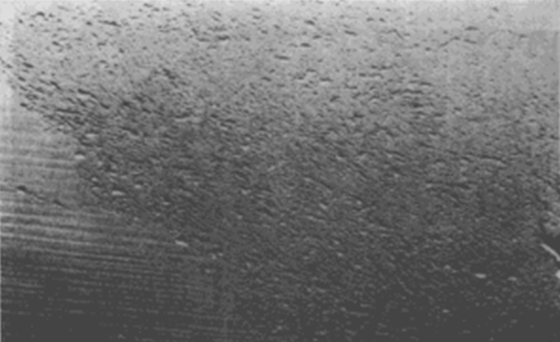What Are You Looking For?
Generally, according to the wear mechanism and the interaction between materials and abrasives and materials and materials in the wear system, the main types of wear can be divided into abrasive wear, adhesive wear, erosion wear, fatigue wear, corrosive wear and fretting wear, etc. 6 types.
1.1 Abrasive Wear
Hard particles or protrusions that enter between the friction surfaces from the outside plow out many grooves on the surface of the softer material, resulting in material migration and a wear phenomenon called abrasive wear.
The main factors affecting this kind of wear: in most cases, the higher the hardness of the material, the better the wear resistance; the amount of wear increases with the increase in the average size of the wear particles; the amount of wear increases with the increase in the hardness of the abrasive particles. Increase etc.
1.2 Adhesive Wear:
Wear caused by material falling off or transferring from one surface to another due to solid phase welding when contact surfaces move against each other.
The main factors affecting adhesive wear: Similar friction pair materials are easier to adhere than dissimilar materials. Surface treatment (such as heat treatment, spraying, chemical treatment, etc.) can reduce adhesive wear; brittle materials have higher resistance to adhesion than plastic materials; the surface of the material is rough The smaller the degree value, the stronger the anti-adhesion ability; controlling the temperature of the friction surface and using lubricants can reduce adhesive wear, etc.
1.3 Erosion or Erosive Wear
When a fluid containing flowing particles (solid, liquid or gas) impacts the surface of a material, a wear phenomenon is called erosional wear.
The main factors affecting erosion wear are the impact speed and angle of flowing particles.
1.4 Fatigue Wear
When two materials move relative to each other (rolling or sliding), the contact area is repeatedly acted upon by cyclic stress. When the cyclic stress exceeds the contact fatigue strength of the materials, fatigue cracks form on the contact surface or somewhere below the surface, causing the surface layer to partially fall off. This phenomenon is called due to fatigue wear.
The main factors affecting fatigue wear: the higher the surface hardness of the part, the smaller the risk of fatigue cracks; reducing surface roughness can improve the fatigue life of the part; high viscosity lubricating oil can improve the ability to resist fatigue wear, which is beneficial to improving fatigue life. lifespan etc.
1.5 Corrosive Wear
During the friction process, a chemical or electrochemical reaction occurs between the friction surface and the surrounding medium, resulting in the loss of surface materials, which is called corrosion wear.
The main factors that affect corrosion wear: the properties of corrosive media (such as acids, alkalis, salts), the properties of the oxide film on the surface of parts, and ambient temperature and humidity.
1.6 Fretting Wear
Fretting wear occurs when metal surfaces that are pressed against each other vibrate at small amplitudes, causing oxidized wear particles to be produced on the contact surface, which are difficult to remove from the contact parts.
The main factors affecting fretting wear: The wear of similar materials is much more serious than that of dissimilar materials.
